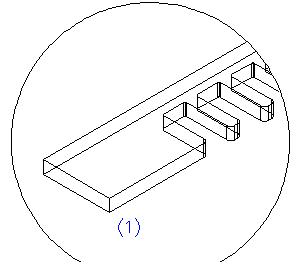A Review of Thermal Performance of Insulation Materials Terminology & Methods
A Review of Terminology & Methods
Over the years, there has been considerable debate on determining and classifying the thermal performance of insulation materials used in electrical power systems equipment and related applications. Unfortunately, there is a tremendous amount of confusion in the marketplace regarding the thermal performance of insulation materials. There are many terms used to describe thermal performance, including:
- Relative Temperature Index
- Thermal Classification
- Continuous Operating Temperature
- Tg – Glass Transition Temperature
- Thermal Endurance
However, as a customer of branded material, it is essential to ask and understand what is being supplied.
A Review of Thermal Performance of Insulation Materials Terminology and Methods


Dry Type Trasnformers are one example of electrical equipment that relies on relatively high temperature electrical insulation materials. Most electrical equipment relies on the thermal performance of the electrical insulation components and insulation systems for a long life in service.
Thermal Performance
This paper reviews the various electrical industry standards established by widely known trade organizations and associations. We attempt to educate and illustrate the various test methods used to determine thermal performance specifically for electrical insulation materials.
The Gund Company fabricates custom electrical insulating components for power systems equipment, including generators, transformers, switchgear, power supplies, electric motors, and related equipment.
Insulation material selection can be quite a challenge due to many factors that influence insulation system engineering and insulation component design. One key criterion for insulation material selection is the material’s thermal performance. Since it is impractical to test material in equipment for as long as it is expected to be in service (i.e., 20 years), other methods have been developed to determine the thermal performance of electrically insulating material.

Temperature Classification
(IEEE Standard 98-1994)
A term reserved for insulating systems as used in specific equipment is no longer recognized as a description of the temperature capability of individual insulating materials (IEEE Standard 98-1994). Note: Individual dielectric materials are, however, commonly referred to as Class 90, Class 105, etc., materials.
Thermal Endurance
It is defined as the relationship between temperature and the time spent at that temperature required to produce such degradation of electrical insulation that it fails under specified conditions of stress, electric or mechanical, in service or under test (IEEE Standard Dictionary of Electrical and Electronic Terms). The point of failure also referred to as the “thermal life,” is typically considered when the measured property falls below 50% of its original, untreated value.
Relative Temperature Index (RTI)
IEEE Definition:
An index that allows relative comparisons of the temperature capability of insulating materials or insulation systems based on specified controlled test conditions (IEEE Standard Dictionary of Electrical and Electronic Terms).
UL Definition:
The temperature above which the material is likely to degrade prematurely. This temperature can be determined by performing a thermal aging comparison against a material that has acceptable performance at a known temperature. The RTI can also be assigned based on the known version of the generic class of the material.
Temperature Index
ASTM Standard D2304
A number that permits comparison of the temperature/time characteristics of electrical insulation material, or a simple combination of materials, based on the temperature in degrees Celsius which is obtained by extrapolating the Arrhenius plot of life versus temperature to a specified time, usually 20,000 hours.

